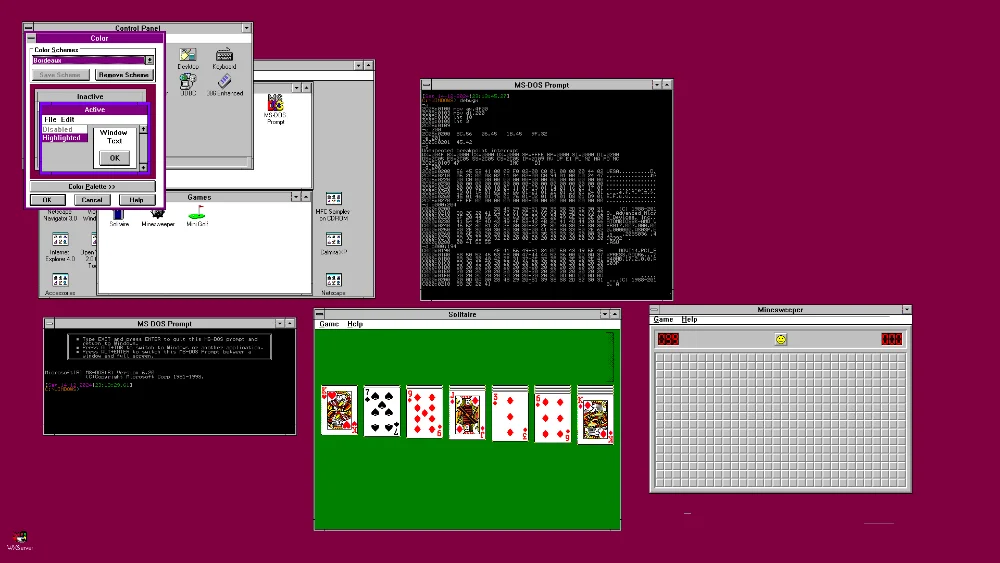Who would have thought that in 2025, we would still be talking about Windows 3.1 and yet, a genius developer has just achieved something truly remarkable. He has developed a video driver that allows you to display this good old Microsoft operating system in Full HD !
For those who didn't know this era (or who prefer to forget it), Windows 3.1 was released in 1992, at a time when displaying 256 colors at 640×480 was already considered a luxury. Graphics cards of the time, mainly based on the standard VGAwere also very limited compared to our monstrous RTX and others Radeon current.
The developer PlumMGMK therefore had the brilliant idea of creating a generic video driver called VBESVGA who uses the extensions VESA BIOS present on all modern graphics cards. Result ? Windows 3.1 can now be displayed in 1920×1080 with millions of colors!
The pilot uses a particularly clever approach since he relies on the standardized VESA extensions rather than on manufacturer-specific features. It also supports all color modes (8, 16, 24 and 32 bits) and handles modes with linear framebuffer that the bank switching.
And its configuration is simply done via the file SYSTEM.INI with some key parameters:
[VBESVGA.DRV]
Width=1920
Height=1080
Depth=24
fontsize=small
What's particularly smart about this driver is that it incorporates several advanced optimizations like the double buffering to improve display performance, support for protected mode for direct access to video memory, intelligent font management with a choice between 96 and 120 DPI and of course rigorous validation of the available VESA modes.
Now, you may be wondering the point of running Windows 3.1 in high resolution in 2025. Well, what the heck if not continuing to properly run software that is part of our historic tech heritage, but also for retro -gaming / retro-computing. And for fun of course!
Of course, this driver is not magic and retains some limitations such as the lack of support for interlaced modes. Also, some programs may poorly handle high resolutions and double buffering will require sufficient system RAM. Finally, some advanced graphic effects might not work… but hey, it's not too critical.
In any case, a big congratulations to the dev who made this project possible! Who's hot to test now?
Source link
Subscribe to our email newsletter to get the latest posts delivered right to your email.




Comments